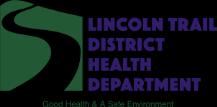


Introduction Foreword
Baptist Health Hardin conducted this community health needs assessment as basis for its community health and engagement strategy to cover fiscal years 2025–2027 (September 1, 2024–August 31, 2027). The approval and adoption of this report by the Baptist Health System, Inc. Board of Directors complies with federal requirements of tax-exempt hospitals.
Executive Summary
The purpose of this community health needs assessment (CHNA) is to identify and analyze community health needs for the community served by Baptist Health Hardin. This CHNA prioritizes the health needs the hospital will work to address from September 2024–August 2027.
The community health needs assessment process followed these steps:
• Inpatient data on patient county of residence defined the “community served” as Hardin County.
• Secondary data was gathered from the United States Census Bureau, Centers for Disease Control and Prevention, County Health Rankings and Roadmaps, Kentucky Injury Prevention and Research Center, and Unite Us. These sources provided information on the community’s demographics, mortality, quality of life, clinical care options, health behaviors, socio-economic factors, physical environment, and community feedback.
• Primary data was gathered from the Lincoln Trail District Health Department on health priorities. The health department also collected community input through a joint survey with Baptist Health Hardin.
• Additional data input was solicited from written comments on the previous CHNA.
• Eight prioritization factors were used to examine health need, including: mortality, morbidity, magnitude, community input, public health, equity, identification as an “area to explore,” and alignment. Each health need was scored for its impact on current community health conditions. The total score for each health need was summed. The top-scoring health needs were identified as priority health needs.
• The CHNA Steering Committee reviewed all data and concurred with the health needs identified by the prioritization matrix.
• The significant health needs to be addressed in this CHNA are:
1. Mental Health
2. Substance Use (Drug/Alcohol/Tobacco Use)
3. Access to Care
• This CHNA also identifies potentially available resources for addressing these health needs.
• This CHNA process was reported to the Baptist Health Hardin administrative board of directors on May 21, 2024.
• This report was offered for approval and adoption at the Baptist Health System, Inc. Board of Directors meeting on June 25, 2024.
• The final adopted CHNA will be made public and widely-available on or before August 31, 2024 on the Baptist Health website at BaptistHealth.com.
• Next steps include developing an action plan to address the identified health needs through the accompanying report to this CHNA, the Implementation Strategies.

Organization Description
Founded in 1924 in Louisville, Kentucky, Baptist Health is a full-spectrum health system dedicated to improving the health of the communities it serves. The Baptist Health family consists of nine hospitals, employed and independent physicians, and more than 500 points of care, including outpatient facilities, physician practices and services, urgent care clinics, outpatient diagnostic and surgery centers, home care, fitness centers, and occupational medicine and physical therapy clinics.
Baptist Health’s eight owned hospitals include more than 2,300 licensed beds in Corbin, Elizabethtown, La Grange, Lexington, Louisville, Paducah, Richmond and New Albany, Indiana. Baptist Health also operates the 410-bed Baptist Health Deaconess Madisonville in Madisonville, Kentucky in a joint venture with Deaconess Health System based in Evansville, Indiana. Baptist Health employs more than 24,000 people in Kentucky and surrounding states.
Baptist Health is the first health system in the U.S. to have all its hospitals recognized by the American Nursing Credentialing Center with either a Magnet® or Pathway to Excellence® designation for nursing excellence.
Baptist Health’s employed provider network, Baptist Health Medical Group, has more than 1,775 providers, including approximately 820 physicians and 955 advanced practice clinicians. Baptist Health’s physician network also includes more than 2,000 independent physicians.
Baptist Health Hardin, a 300-bed hospital, serves residents in ten central Kentucky counties: Hardin, LaRue, Meade, Breckinridge, Grayson, Nelson, Hart, Bullitt, Green and Taylor.
Community Served by the Hospital
Community Definition
The community is defined as the geographic area from which a substantial number of patients admitted to the hospital reside. The Baptist Health Planning Department pulled a report reviewing calendar 2023 admission and the patient county of origin data. Hardin County accounted for 61.6% of admissions in 2023, the latest calendar year available as of this report. Given this majority, Hardin County was defined as the community for this CHNA.
The community definition for the purposes of this report was discussed by the hospital president and the system director of community health and confirmed through discussion with the CHNA Steering Committee This does not change or impact service area definitions for other hospital purposes. The chart below details the number of patients by county for counties with at least 10 patients originating in that county.

Calendar Year 2023 Admissions: Patient County
Source: Baptist Health Planning & Analysis Qlik Data Exports (Patient Level Export)

Population Demographics
Identifying population demographics helps the hospital team understand characteristics unique to their community. Notable for Hardin County is that residents are younger than the Kentucky average There is more racial and ethnic diversity in the community members of Hardin County than the state. Population density is similar to the state average. The chart below shows county-level demographics as compared with Kentucky.
County-Level Demographics as Compared to State
Source: United States Census Bureau QuickFacts (2023)
Data Sources and Collaborators
Required Input
Three sources of input are required for the CHNA, and those three sources of input were satisfied through the inclusion of the following sources:
• Public health agency
o Input from the Lincoln Trail District Health Department (LTDHD) was included to satisfy this requirement. In addition to being engaged in the CHNA Steering Committee, LTDHD provided public health expertise and input throughout the CHNA process. Baptist Health Hardin is grateful for the deep partnership with LTDHD on this report. Public health input was included in the prioritization matrix under “Public Health.”
• Members of medically underserved, low-income and minority populations, or individuals representing the interests of these populations

o Data from Unite Us, a community referral platform serving our community’s most vulnerable, provided information on the needs of underserved populations. A Network Activity report run by Baptist Health identified the needs for which community members requested resources or support from community agencies and healthcare organizations from Jan. 1, 2023 Dec. 31, 2023. This input was included in the prioritization matrix under the “Equity” factor.
o General community input was pulled from responses to the community input survey led by Lincon Trail District Health Department. The general community input was included in the prioritization matrix under “Community.”
• Written comments received on the previous CHNA
o Written comments were solicited via a webform at Community Health Needs AssessmentsBaptist Health, beginning in September 2021 and available through the present time. The webform included the language: “Please provide any feedback on our Community Health Needs Assessment or Strategic Implementation Plan. Input will be considered as we measure progress on our current plan and as we conduct our next assessment. If you represent an organization whose feedback you would like represented on our CHNA Steering Committee, please contact us below.”
o The webform received responses, but no comments provided direct feedback on the preceding CHNA or accompanying Implementation Strategies report.
Additional Sources of Input
Other data sources used to understand the community health needs include:
• Baptist Health Planning
o The Baptist Health Planning Department provided data on inpatient county of origin, which was used to determine the community definition for this CHNA.
• Center for Neighborhood Technology
o The “Housing and Affordability Index” was used to determine the potential impact of transportation costs on the health outcomes in the community.
• Centers for Disease Control and Prevention (CDC)
o The CDC’s National Center for Health Statistics data report “Leading Causes of Death” identified mortality in the community served.
• CHNA Steering Committee
o This committee includes hospital leaders, school officials, public health experts, community organizations, partners and donors. This group was committed to meeting quarterly to accelerate results and avoid duplication of efforts. The full list of Steering Committee members is listed in the Appendix of this report.
• County Health Rankings and Roadmaps (a program of the University of Wisconsin Population Health Institute and the Robert Wood Johnson Foundation)
o The County Health Rankings and Roadmaps is a publicly available data repository updated annually from many sources. Health data is available at a county level on such topics as quality of life, clinical care, health behaviors, socio-economic factors, and physical environment data.
• Kentucky Injury Prevention and Research Center (KIPRC)
o KIPRC provides county-level drug overdose rates, as well as data on hospital visits and inpatient admissions due to drug use.

• United States Census Bureau
o The 2023 Quick Facts data identified community demographics regarding population, age, gender, race/ethnicity, country of origin, and health data.
Third-Party Collaboration
No third-party organizations were involved in the writing of this report outside of providing data and feedback as described in the above sub-sections of this CHNA. The Baptist Health System Director, Community Health and Engagement is responsible for the data gathering and needs analysis in this report.
Information Gaps
As is often the case with data collection, some of the data contained within this CHNA was gathered a few years prior to the writing of this report. This may not reflect what is currently happening in the community and the impact of interventions that have since been placed.
We also recognize that community survey data only represents the voices of those who were offered the survey and able to read and respond to it. There is an inherent privilege in this circumstance that may not represent the experience of all living in the community.
We also recognize that Unite Us platform data is only able to respond to needs of which there are referral agencies in the community. This may mean there are underrepresented needs in the community not listed here because there are no agencies or not enough agencies accepting referrals to address the health needs of those community members.

Community Health Data
Health Outcomes: Mortality
Health outcomes detail how healthy a community is and are measured by length of life (mortality) and quality of life (morbidity). The charts below detail the leading causes of death in Hardin County. Heart disease, cancer, and COVID-19 are the top three leading causes of death in this community. The latest data available is from 2020, so COVID-19 is no longer a leading cause of death.
Health Outcomes: Mortality
Source: Centers for Disease Control and Prevention, National Center for Health Statistics (2020)

Health Outcomes: Morbidity
Many factors impact morbidity in a community. We looked at self-reported metrics, like the community’s perception of their own physical and mental health. We also reviewed disease prevalence, like diabetes, and indicators of infant health, including babies born at low birthweights. For an idea of morbidity in the community, the chart below details quality of life metrics for the community compared with metrics from Kentucky and the United States.
Health Outcomes: Morbidity
Quality of Life Metrics
**Self-Reported Health Metric
Source: County Health Rankings (2024)

Health Factors: Health Behaviors
Health factors influence an individual’s health and are impacted by four different areas: health behaviors, clinical care, social and economic factors, and the physical environment. Health behaviors refer to healthrelated practices that can improve or damage health. However, we do recognize that not all community members have the access or means to make healthy choices, as evidenced by the inclusion of data points such as food insecurity (County Health Rankings and Roadmaps, 2024). Areas highlighted in red were noted as “areas of opportunity” by the County Health Rankings and Roadmaps.
Sources: County Health Rankings (2024) and Kentucky Injury Prevention and Research Center (2022)

Health Factors: Clinical Care
Clinical care refers to direct medical treatment or testing. “Access to affordable, quality health care can prevent disease and lead to earlier disease detection,” according to the County Health Rankings and Roadmaps model. Limited or low-quality care can lead to worse health outcomes and lower quality of life.
Clinical care is examined here through two lenses: access and quality. Access to care includes having insurance coverage and having providers available in their communities. “Language barriers, distance to care, and racial disparities in treatment present further barriers to care,” according to the County Health Rankings and Roadmaps. Quality of care includes evidence-based decisions, quality improvement efforts, and care coordination within and among facilities (County Health Rankings and Roadmaps, 2024). Areas highlighted in red were noted as “areas of opportunity” and those highlighted in green were noted as “areas of strength” by the County Health Rankings and Roadmaps.
Health Factors: Clinical Care
Access to Care
Quality of Care
Preventable Hospital Stays:
of hospital stays for ambulatory-care sensitive conditions
Source: County Health Rankings (2024)

Health Factors: Social and Economic Factors
Social and economic factors affect how long and how well communities live. Areas highlighted in red were noted as “areas of opportunity” and those highlighted in green were noted as “areas of strength” by the County Health Rankings and Roadmaps.

Health Factors: Physical Environment
The physical environment of a community impacts its health in obvious areas, like air quality (County Health Rankings and Roadmaps, 2024). The physical environment also impacts quality of life and access to care through factors like its connectivity to jobs and healthcare. Opportunities for transportation, as well as its relative costs and ease of access, greatly influence the health of a community. The relative cost, availability, and quality of housing also affect health.
Health Factors: Physical Environment
Severe Housing Problems
Percent of households experiencing ≥1 of the following: overcrowding, high housing costs, lack of kitchen facilities, lack of plumbing facilities
Severe Housing Cost Burden
Percent of households that spent ≥50% or more of their income on housing
Costs
Transit Performance Score
Score from 1-10 that looks at connectivity, access to jobs, and frequency of service
with very limited or no access to public transportation)
Source: County Health Rankings (2024) The Center for Neighborhood Technology (2023)2

Community and Public Health
Community input was solicited through a survey administered by the Lincoln Trail District Heath Department in the second half of 2023. The survey received 1,547 responses. The health department provided a slide deck to the CHNA Steering Committee on February 2, 2024 with data from the community survey. Select slides from that presentation are included in the Appendix to this report. For the purposes of weighing community feedback in our determination of priority health needs, we selected responses to the question, “What are the most important health problems in our community?” The top three health issues of importance to the community are listed below.
Source: Lincoln Trail District Health Department (2023)
To further examine the needs of our community’s most vulnerable, we pulled referral data from Unite Us, a community referral platform used by a variety of agencies across the United States. The platform allows organizations, such as hospitals and community-based organizations, to send referrals for a community member for needs the referring organization cannot address. For example, a hospital may send a referral for a patient to a local food bank when the patient expresses issues of food insecurity.
A report pulled for all three counties showed the top need as a basis for referral was food assistance. This data source is limited by the small number of referrals and by the type of agencies available on the platform. Despite the limitation, this data source represents a concerted effort to include the community members whose voices may not be represented in a traditional survey.
Source: Unite Us Insights: Network Activity Overview (2024)
Lincoln Trail District Health Department provided their community health improvement plan dashboard and metrics to share their areas of focus. For the purposes of weighing health department feedback in our determination of priority health needs, the health department provided the below areas of focus, based on two methodologies (by vote and by data).

Source: Lincoln Trail District













